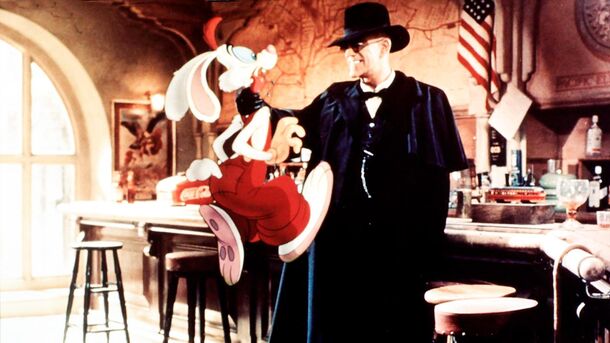6 Cult Classic Movie Scenes You Probably Got Completely Wrong

First, you misunderstand that scene from Shrek as a kid, then you miss the whole point of Superman's basic principles.
In the realm of cinema, certain scenes are etched into our collective memory, becoming touchstones of pop culture. Yet beneath the surface of these iconic moments lurks an enigmatic complexity that we, as viewers, may not see upon first viewing. The complexity of such scenes is often hidden, covered up by our initial interpretations.
Here are 6 cult classics and their iconic scenes that you probably misunderstood.
Taxi Driver
In Martin Scorsese 's Taxi Driver, on his disturbing odyssey through the seedy underbelly of New York City in the 1970s, we meet Travis Bickle, a socially isolated, insomniac cab driver. Travis' struggles with human connection lead to his misguided search for meaning that involves violence and an obsession with saving a young prostitute.
The movie's ending, in which Travis is hailed as a hero, has sparked interpretations that glorify his actions. However, a closer look at this scene reveals that rather than celebrating Travis's descent into chaos, the film criticizes society by highlighting the consequences of the social glamorization of violence.
Toy Story
In Toy Story, one of the film's most subtle yet cleverly adult-themed moments is represented by the character Sid's creation known as Legs, a quirky and inventive toy that resembles a fishing rod with the legs of a girl's doll attached. While it may seem like a bizarre and imaginative toy, the truth behind it is far more subtle.
The humor here lies in the visual and linguistic wit, as Legs is a double reference — on one level, it's a play on the fact that the doll's legs are attached to a fishing hook, forming a quirky contraption. On a more adult level, however, it alludes to the term "hooker," adding an extra layer of humor that even adult viewers might miss while first-time watching.
The Little Mermaid
In this cult classic Disney film, Ariel's iconic song Part of Your World is a deeply moving moment that holds hidden meaning. As Triton's daughter longs for a life on land and escapes her controlling father's underwater kingdom, one lyric resonates: "I bet they don't scold their daughters. Bright young women, sick o' swimmin', ready to stand."
Set in the 1800s, this subtext adds depth to Ariel's desire for a better life on the surface, as she imagines a world where humans are more socially progressive than merfolk. While Ariel's dream of becoming human is valid, she doesn't realize that it won't immediately solve all of her problems, making this a pivotal moment that highlights her youthful and not-so-rational perspective.
Inception
Christopher Nolan 's Inception is a labyrinth of dreams within dreams, with a meditation on the power of the human imagination at its core. The film is a mind-bending science fiction tale that follows Dom Cobb and Arthur, corporate spies skilled in "extraction" – the art of unlocking secrets from the depths of the human mind. Dom's exile from the United States leads him to a job where they must perform "inception," planting an idea deep into the subconscious.
The movie's iconic spinning top is used throughout the film to separate dreams from reality, and Cobb's uncertain fate, determined by the spinning top, has sparked endless debate among fans. But most of them miss the point — it isn't important whether the top is still spinning or not, it's important that Cobb isn't looking anymore.
Who Framed Roger Rabbit
In Toontown, a world where Toons coexist with humans, viewers don't realize they're witnessing a deeper story than just a simple live-action movie with animation.
The film shows Eddie Valiant on the verge of unraveling a complex conspiracy masterminded by the villainous Judge Doom. Doom's conspiracy involves dismantling the city's streetcar system to build a highway, echoing real history in which a company backed by automobile manufacturers shut down the Los Angeles streetcar system.
However, this historical context reveals that the LA streetcar system was already struggling due to inefficiency and lack of public interest, dispelling the notion of a deliberate auto industry plot to eliminate it. Though the theory remained a conspiracy, it had a huge impact on the movie's plot that you probably never knew existed.

Man of Steel
Zack Snyder's Man of Steel has been criticized for the portrayal of Superman, in particular for his decision to kill General Zod. However, many forget that Superman's character has evolved over time, and in his earliest comics and on-screen appearances, he never followed a strict "no-kill" rule.
The situation with General Zod in the movie posed a dire threat to humanity, leaving Superman with no choice but to take decisive action. Allowing Zod to live would have resulted in the deaths of countless innocents, so the key point is not that Superman broke his no-kill rule, but rather that we witnessed the origin of this iconic no-kill-unless-I-gotta principle in his character development.